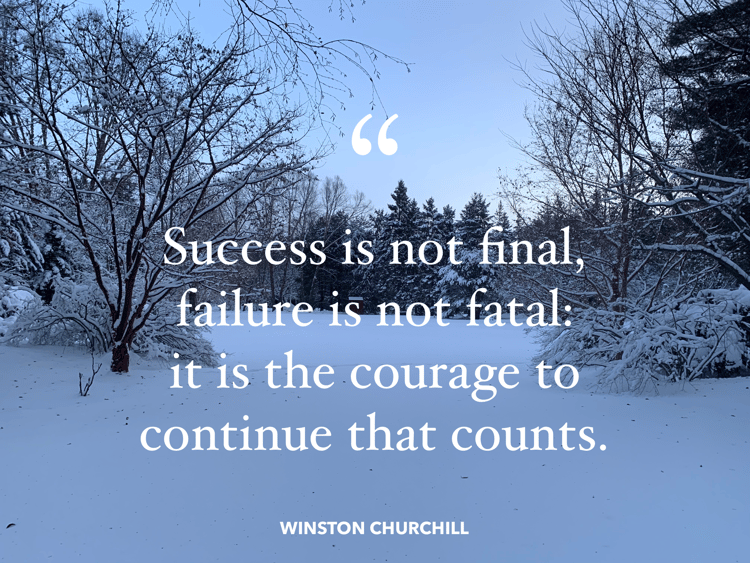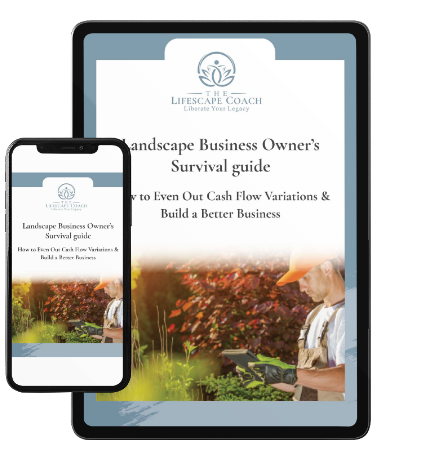Want to be a more successful landscape business? Start analyzing your failures!
Nobody likes to fail. It’s uncomfortable, annoying, and even depressing. People instinctively try to avoid failure and when we fail, we don’t like to revisit those often painful experiences. Most of us prefer to simply forget about them and move on to something else more positive and pleasant.
But here’s the thing -- ignoring failure sets you up for failing again.
Instead, we need to embrace failure. Look it square in the eye and ask, “how and why did this happen?” As landscaping professionals it’s important that we look back at the prior year, understand what worked, and analyze what went wrong. Our mistakes can teach us what we need to do to improve.
Philosopher George Santayana famously said, “Those who forget the past are doomed to repeat it.”
This holds true for landscapers, too. It’s important to learn from our mistakes. But just as important, we need to review our successes, too, and understand what made them work. We need to analyze the good as well as the bad to be better businesspeople.

Here are some tips for making the most of failure:
Turn failures into learning opportunities
It’s not easy to shine a light on what went wrong. Turning it over and over to find out why things just didn’t work, but it’s important. Examining a failure helps you gain insight into it.
John Maxwell wrote a book entitled Failing Forward. In it, he talks about turning mistakes into stepping stones for success. He unpacks the idea of “failure” and puts it into perspective so that you’re able to take a failure apart, look at the pieces leading up to it, and then use that analysis and information to refocus your efforts so that your next attempt is better informed and primed for success. Failures now become learning opportunities.
Projects fail, not people
Just because projects fail doesn’t mean that the people involved are failures. Failures are typically caused by a number of factors, and should not be blamed on a particular person or persons. Sometimes things just don’t work the way you thought they would. Maybe you or somebody else involved tried their best to make it happen and it simply didn’t pan out.
Labeling the project a failure enables you to look back at it objectively, without regret and more importantly without shaming yourself or others. We all have the capacity to learn, to do better, and to lean into what could have been done differently. Accept the reality that sometimes we miss the mark in designing, planning, or executing a project.
If whatever you were attempting is worth another attempt, restructure your game plan and try a different approach. Do this without spending too much time wallowing in the pain of the failed attempt. This will keep you moving forward with as little struggle as possible.
Learn from successes, too
Yes, you may have had failures, but you had successes, too, right? Learn from them as well. What was it about a particular project that made it go so well? Analyze the actions and elements of that success and figure out how to apply them to garner more success and maybe correct past failures.
Mindset, of course, is a critical element of any project. How did you feel about that project -- good or bad -- at the beginning? Just as important, how did the other people involved in the project feel about it? What was their attitude? Were they properly motivated and did they bring their A-game? Understanding mindset is crucial and often the key component that determines success or failure.
It’s tricky to understand why projects fail. Sometimes it’s just a matter of timing and things just don’t mesh smoothly together. So take the time to peel your mistakes apart and look at all the layers: employees, timing, resources, clients. Apply some creative, strategic thinking to the task to determine what went wrong, what went right, and what you need to do next time to improve.
Looking back will help you look forward
An annual assessment of your business and its project and initiative outcomes should be a fundamental business-improvement tool in your professional toolbox. Analyzing successes and failures will provide you with the knowledge and insight necessary to make meaningful, actionable improvements to your landscape business.
Here’s an example of how to do an assessment of the previous year:
A couple of years ago, I looked back at how my business did and discovered a failure in staff development. I realized I had taken on too much myself, didn’t engage key members of my team in critical decision making, and rushed through a lot of staff-related tasks. In 2019, I decided I needed to get the management team on board, divide the recruiting and staff development workload, and give it enough time to succeed. Now in 2020, when I look back on the same project, I realize we had the most successful onboarding and training experience we ever had. This year we’re using 2019 as a model, honing that success and codifying the process so it becomes a system we can repeat year after year.
The takeaway here is to embrace failure as a positive tool for change. Learn from your mistakes – and your successes, too. There is value in both. When you’re able to look at success and failure as equal opportunities to evolve and improve, you’ll be much farther down the road to creating a successful, sustainable business.
Landscape Business Owners Survival Guide



